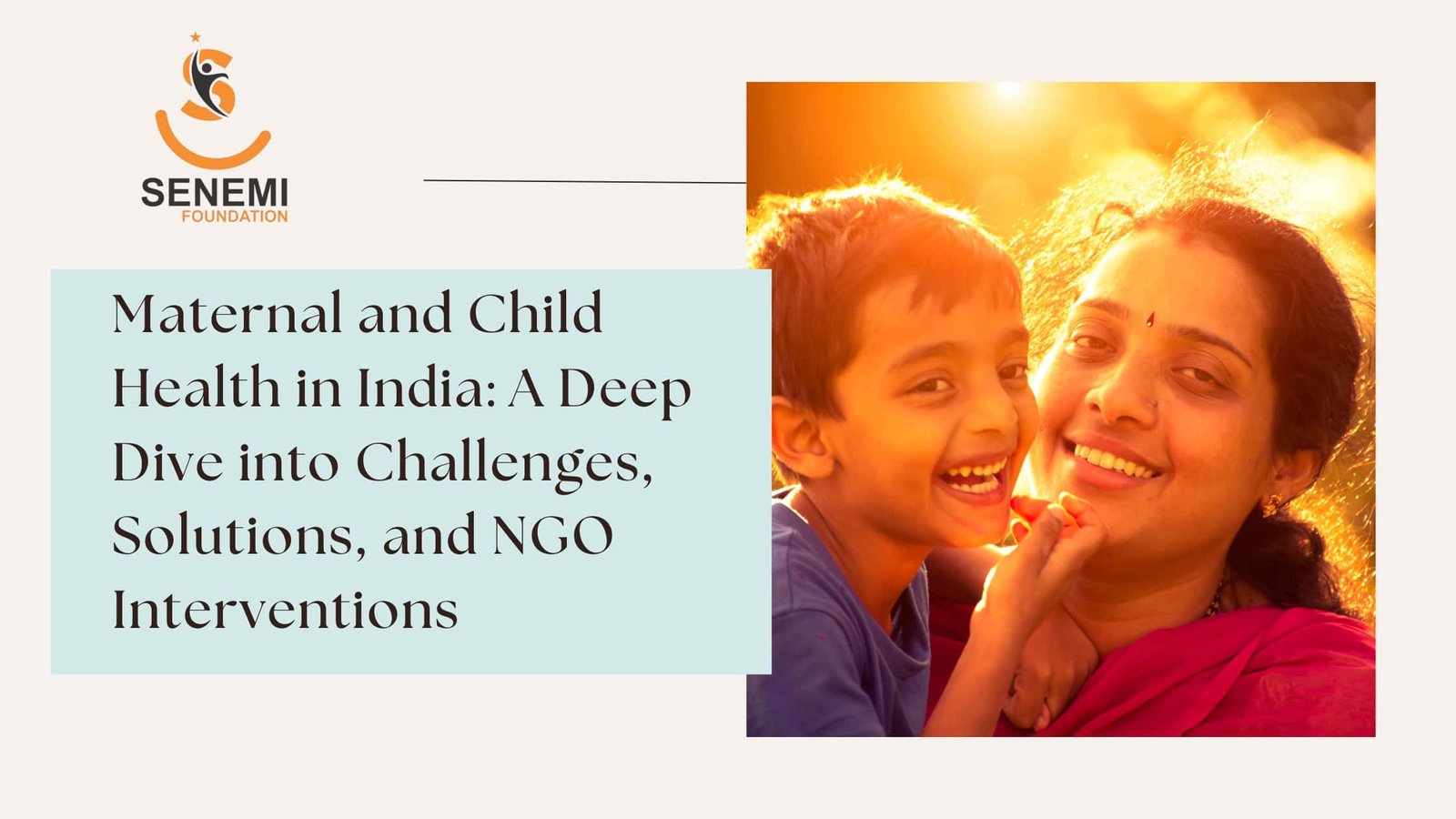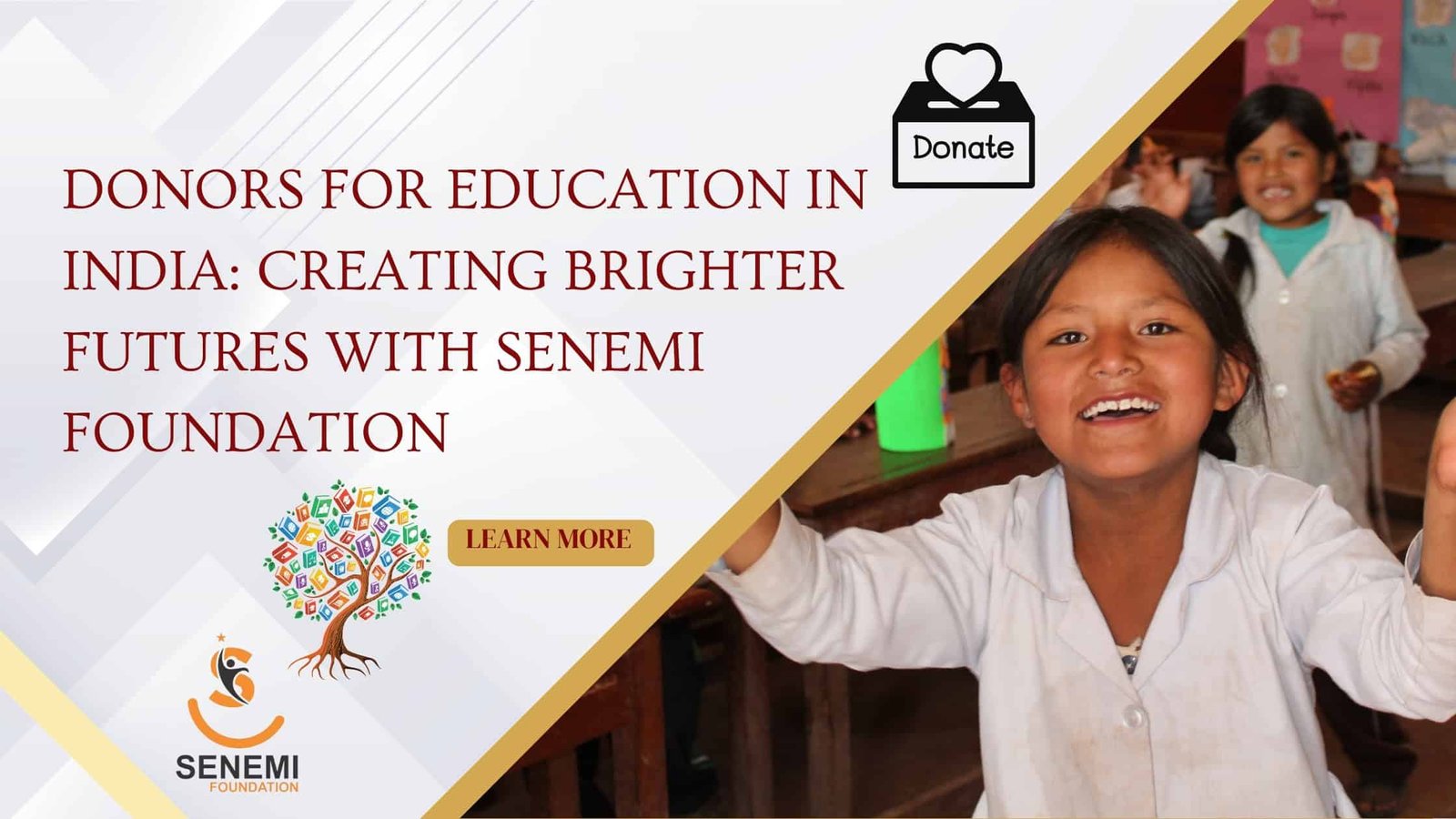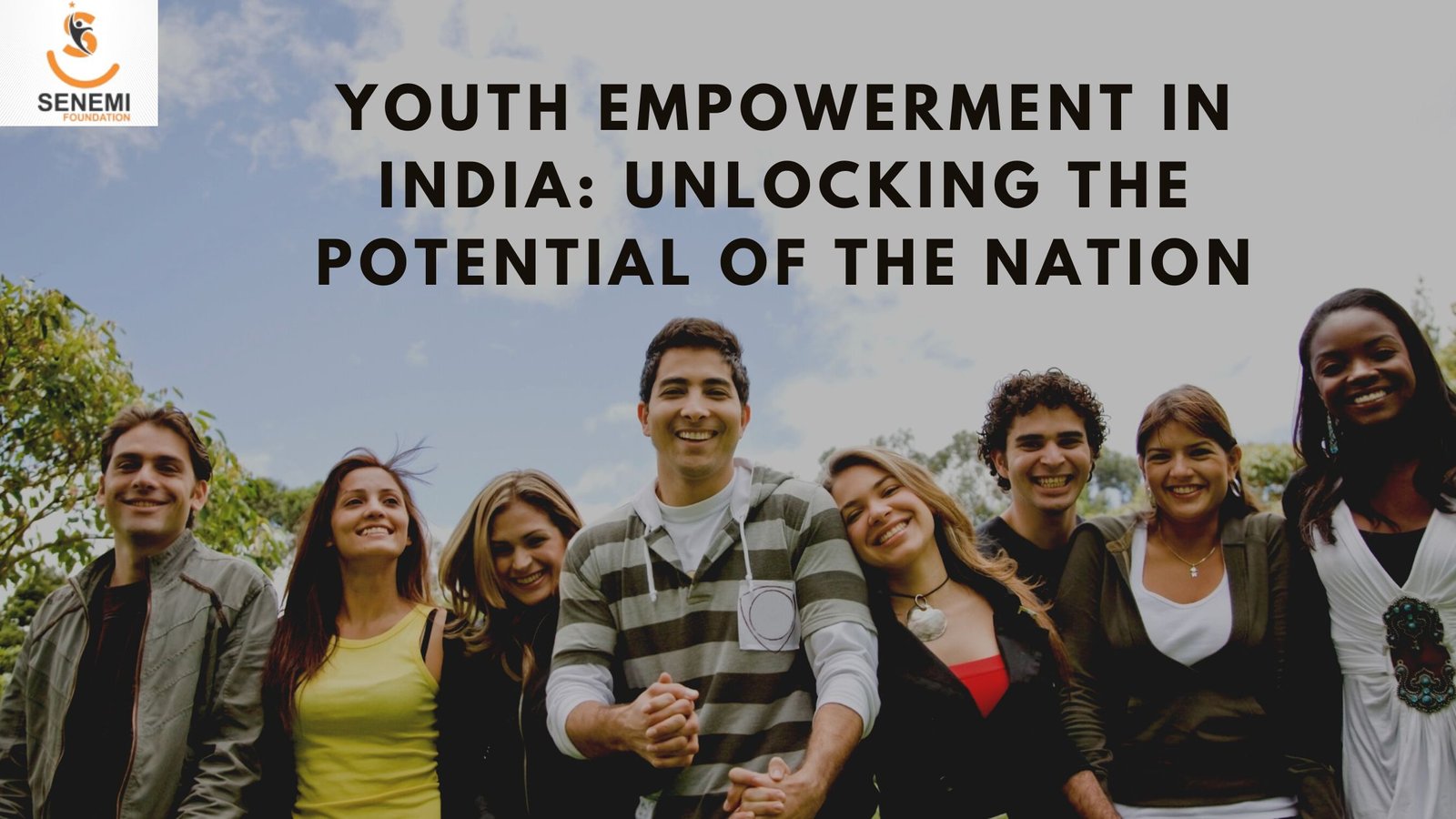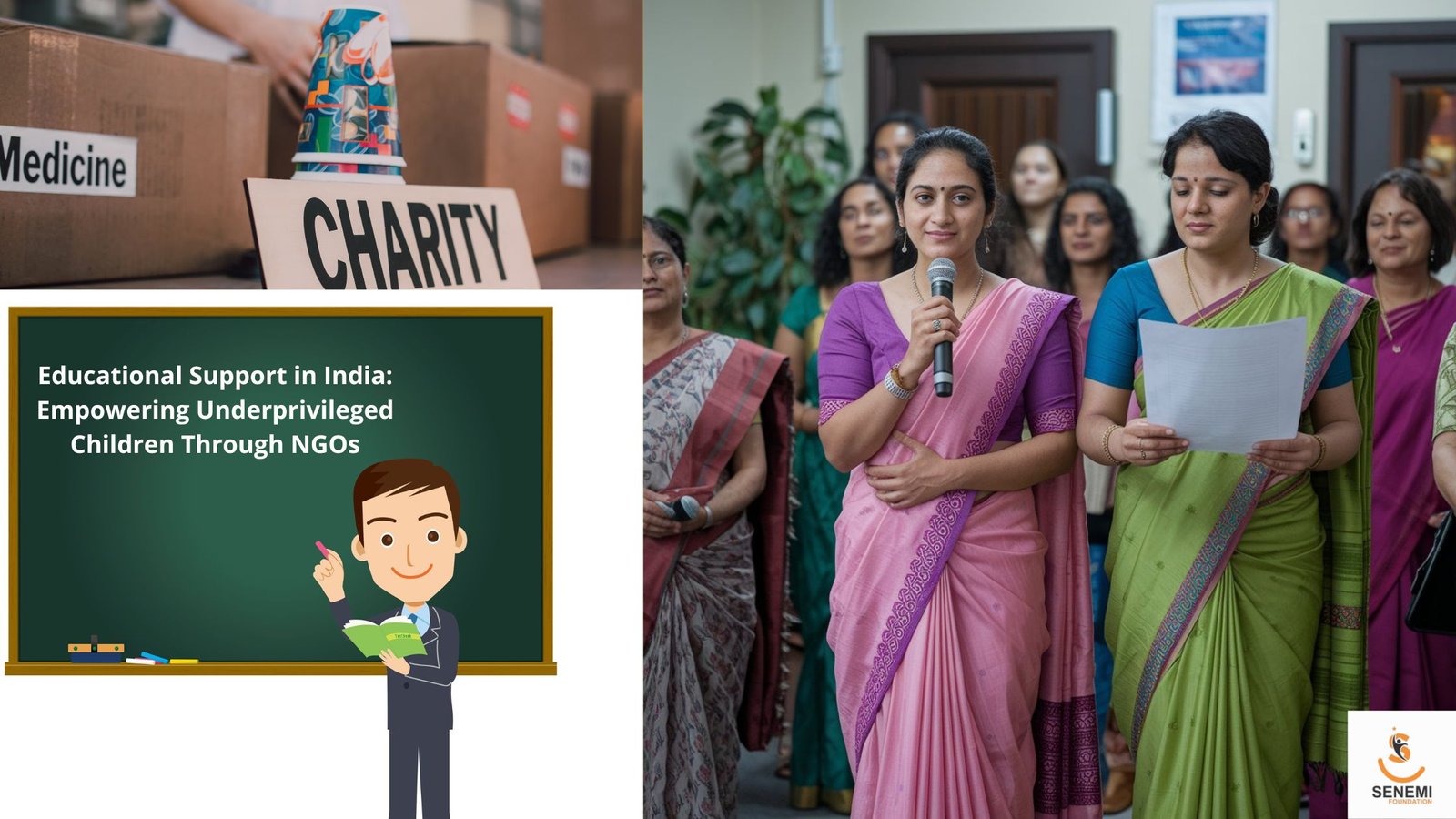

Introduction: Education in India — A Landscape of Inequality
India is home to over 250 million school-going children, yet the quality and access to education remains deeply unequal. From overcrowded classrooms and poorly trained teachers to a lack of basic facilities and digital tools, the Indian education system faces systemic challenges. While the government has introduced various policy reforms, implementation at the grassroots level often falls short. This is where NGOs step in as catalysts for change. The role of NGOs in India’s education reform journey is critical — especially for underserved communities, girl children, and rural populations. NGO education reform initiatives have not only filled critical gaps but have also sparked long-lasting transformations.
How NGOs Help in Improving Education in India
Non-governmental organizations (NGOs) play a crucial role in making education inclusive and equitable. While the government provides the skeleton in the form of policies and schemes, NGOs flesh it out by implementing programs at the community level. They reach where the government can’t — deep into villages, slums, and tribal belts where children are still deprived of quality learning.
Through innovative teaching methods, community mobilization, teacher training, and infrastructure development, NGOs have made a measurable impact. Many have successfully implemented education projects run by NGOs in India that bring in out-of-school children, reduce dropout rates, and increase girl child enrollment. These ngo education reform programs are often aligned with the Right to Education Act and support India’s vision of Education for All.
The Impact of NGOs on the Indian Education System
Over the last few decades, NGOs have transformed from being mere service providers to policy influencers. Their on-ground experience enables them to offer scalable models that have been integrated into public systems. The impact of NGOs on Indian education system is evident in several areas — be it improving early childhood education, setting up digital classrooms, or advocating curriculum changes for skill-based learning.
For example, NGOs have piloted digital learning initiatives and school infrastructure improvement programs that have been adopted by state governments. They have also trained thousands of teachers in modern pedagogy. Some have even contributed to national-level education policy and NGOs collaborations, such as inputs to the National Education Policy (NEP) 2020.
NGOs Working for Child Education in India: Real Examples of Change
Several reputed NGOs in India are solely focused on child education. These include organizations like Pratham, Teach For India, Akshaya Patra Foundation, and Senemi Foundation, among others. They design and execute unique programs that cater to poor child education, literacy, nutrition, and psychosocial support.
Senemi Foundation, for instance, has launched multiple ngo education reform initiatives that target marginalized communities in Delhi, Noida, Uttar Pradesh, Bihar, and Uttarakhand. Through free schooling, mobile education vans, community tutoring centers, and partnerships with government schools, Senemi is bringing education to the doorstep of those who need it most.
Role of NGOs in Rural Education in India
In rural India, access to even the most basic schooling is a challenge. Lack of infrastructure, shortage of qualified teachers, and low awareness among parents often lead to high dropout rates. The role of NGOs in rural education in India is pivotal in addressing these barriers.
NGOs work closely with village panchayats, local volunteers, and educators to ensure school attendance, provide after-school support, and create a conducive learning environment. Programs such as midday meals, sanitary pad distribution for adolescent girls, and hostel facilities for tribal children are also common interventions. NGO education reform efforts in rural India are focused not just on academics but also on holistic child development.
How Do NGOs Support Teachers and Students?
One of the major challenges in India’s education system is the shortage of motivated and well-trained teachers. NGOs have stepped in to bridge this gap through capacity-building workshops, mentorship programs, and toolkits that help educators improve classroom effectiveness.
Additionally, how do NGOs support teachers and students also includes psychological counseling, school readiness programs, and student tracking mechanisms. Many NGOs use tech-based solutions for remedial education and conduct assessments to tailor learning modules. These efforts ensure that children not only stay in school but actually learn and grow.
NGO Contribution to Government School Education
While India has the largest network of public schools in the world, they are often underfunded and inefficient. The NGO contribution to government school education includes providing teaching resources, monitoring tools, and infrastructural upgrades such as libraries, computer labs, and sanitary facilities.
Several NGOs have adopted government schools under public-private partnerships to enhance their performance. These models have proven successful, especially when combined with community ownership and accountability. The ngo education reform mission often involves working directly with government teachers to co-create curriculum plans and improve student learning outcomes.
How NGOs Fill Gaps in Public Education
There’s a significant gap between what the public education system offers and what students actually need. This gap is most glaring for first-generation learners, students with disabilities, and those from minority communities.
How NGOs fill gaps in public education is by focusing on inclusivity, innovation, and individual attention. From inclusive education NGOs for differently-abled children to bridge courses for school dropouts, the diversity of interventions is immense. NGOs also focus on literacy programs in India, offering flexible learning schedules for working children and adult learners.
Role of NGOs in Promoting Literacy in India
Literacy is the first step toward empowerment. Several NGOs are devoted solely to promoting literacy in India, especially among women, Dalits, tribal populations, and the urban poor. Through community libraries, reading campaigns, storytelling sessions, and local language content, these organizations make learning enjoyable and accessible.
Senemi Foundation’s ngo education reform initiatives often include night schools and vocational training to help older children and women achieve basic literacy and functional skills. This not only improves individual lives but uplifts entire families and communities.
How NGOs Help in Girl Child Education
In many parts of India, girls are still pulled out of school to manage household chores or due to early marriage. How NGOs help in girl child education is by advocating for their rights, incentivizing families, and creating safe learning environments.
NGOs run scholarships, distribute bicycles, and set up sanitary facilities to ensure that girls continue their studies. Sensitization programs also educate parents about the long-term benefits of educating daughters. Many NGOs partner with Anganwadis and ASHA workers to identify at-risk girls early and bring them into the schooling system.
What Education Reforms Are Supported by NGOs
NGOs not only implement but also influence what education reforms are supported by NGOs. Their grassroots insights are often used by policymakers to design inclusive education models. From contributing to the drafting of NEP 2020 to promoting community-based education, NGOs have played a role in shaping India’s education landscape.
They also push for reforms in curriculum design, digital education access, assessment methods, and teacher recruitment policies. Their advocacy work ensures that education remains a priority across state and central governments.
Partnership of NGOs and Government in Education
The synergy between NGOs and the government has led to scalable and sustainable educational models. In India, many public-private partnerships in education have shown positive results in attendance, academic performance, and community involvement.
The partnership of NGOs and government in education extends beyond funding — it includes joint implementation of programs, co-training of educators, and shared responsibility for learning outcomes. Such collaborations strengthen accountability and improve the overall education delivery system.
Education Equity and Reaching Marginalized Communities
A key goal of ngo education reform is to ensure education equity in India. Marginalized groups such as SC/STs, religious minorities, migrant labor families, and urban slum dwellers often face systemic barriers to schooling.
NGOs identify these barriers and create tailored interventions, whether it’s through mobile schools, vocational training, or nutrition support. They play a critical role in ensuring the right to education NGO support reaches those at the bottom of the pyramid.
Early Childhood and Community-Based Education
Another area where NGOs excel is in early childhood education by NGOs. They run pre-schools and day-care centers that prepare children aged 3–6 for formal schooling. These centers also educate parents on the importance of the early years.
Community-based education is another important model, where local volunteers, mothers, and youth lead neighborhood learning initiatives. These are especially impactful in areas where formal school access is limited.
Senemi Foundation’s Vision for Education Reform
At Senemi Foundation, our belief is simple: education is the greatest equalizer. Our ngo education reform efforts are designed to create systems of lasting change. Whether it’s running free schools in Uttar Pradesh, improving rural education in Bihar, or launching literacy programs in Uttarakhand, our mission is to reach the unreached.
Through teacher training, child tracking, and tech-enabled learning, we are building resilient education ecosystems. We work closely with local stakeholders — from village leaders to district administrators — ensuring that our efforts are community-owned and scalable.
Conclusion
India cannot achieve its dream of Viksit Bharat without fixing its education system. While the government is making efforts, it is NGOs that bring agility, innovation, and empathy to the ground level. NGO education reform is not a support mechanism — it is an essential pillar of our national progress.
As concerned citizens, corporates, and communities, we must support NGOs in their efforts — through donations, volunteering, partnerships, and advocacy. Education is not just a right; it’s a responsibility we all share.
 Abhay
Abhay










